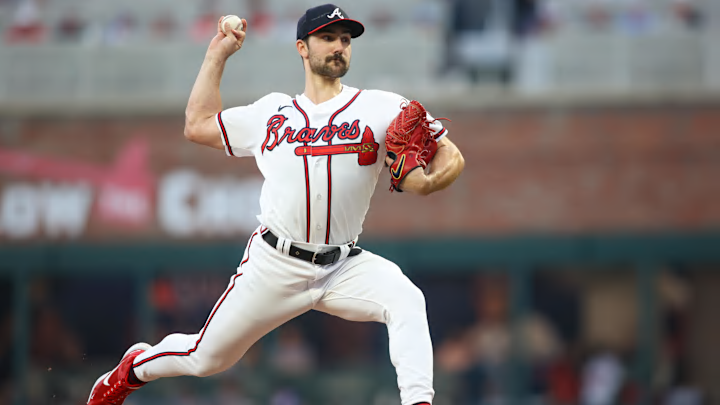The Case For Strider
If voters want to find a reason they can write about when they vote for Strider, they could look at statistics that look at his situational pitching, SIERA, and DRA.
Fangraphs’ Skill-Interactive ERA and Baseball Prospectus Deserved Run Average and DRA-. Both stats look beyond ERA in an attempt to determine how much a pitcher does to limit runs. Follow the links to get a better understanding of what and how they measure performance.
SIERA and DRA are expressed like ERA. DRA- is similar to ERA- in that lower numbers are better. A DRA- of 84 means the pitcher performed 16% better than the league.
Playe | SIERA/RK | DRA / RK | DRA- / RG | |||||||||||||
|---|---|---|---|---|---|---|---|---|---|---|---|---|---|---|---|---|
Galen | 3.72 / 7th | 3.98 / 7th | 84 / 6th | |||||||||||||
Snell | 4.08 /12th | 4.46 / 25th | 95 / 24th | |||||||||||||
Steele | 3.63 / 5th | 3.80 / 4th | 81 /4th | |||||||||||||
Strider | 2.78 / 1st | 3.35 / 1st | 71 / 1st | |||||||||||||
Webb | 3.21 / 2nd | 3.50 / 2nd | 74 / 2nd | |||||||||||||
Wheeler | 3.52 / 4th | 3.64 / 3rd | 77 / 3rd |
Writers Like A Simple Number
"This is wrong tool. No. No. Not good. No. No. Never use this.""-- Zathras in Babylon 5
I started by saying that wins don’t mean as much now, but in times like this, wins matter. I said WAR of any flavor is only one statistic and, by itself, doesn’t give you all of the information needed to vote, but fans know what it is; rather, they know what they think it is.
"…of the last 20 award winners, 13 led the league in rWAR, 11 in wins, and ten in ERA….Strikeouts and innings leaders won the honor six and five times, indicating that voters pay some attention to them (even) though the more innings a pitcher throws, the more counting stats he’s likely to accrue."Dan Epstein, linked above.
In other words, I expect writers to talk about wins, WAR, strikeouts, and ERA when explaining their vote.
That’s a Wrap
I’m staring at a lot of things that suggest Steele has an excellent chance of winning. Without him, the Cubs are getting tee times set up for October. The same is true of Strider’s contribution to the Atlanta Braves Season, and without Webb, the Giants are done by July.
I’d love to see Strider when a Cy Young, but I don't think it will happen this year. But the vote will be close, and any of the six candidates listed could win. All we can do is wait and hope Strider does something spectacular in his next two starts.
